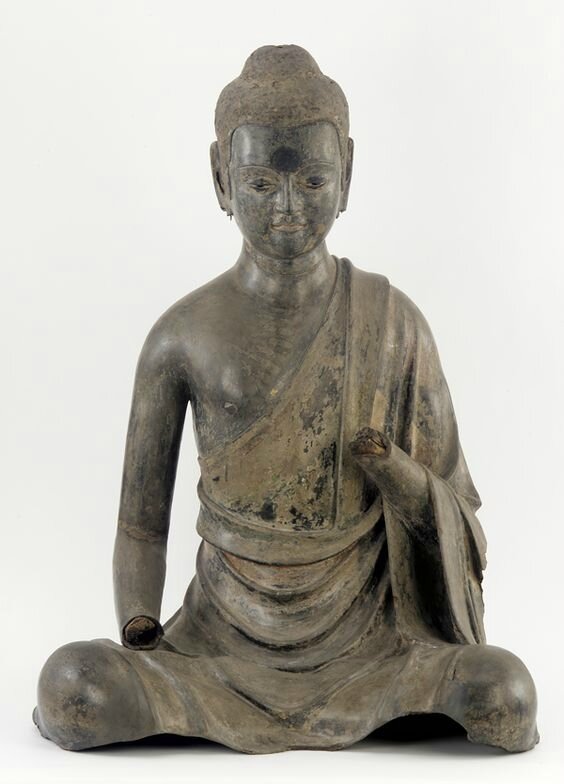Dishes measuring approximately 29 cm. in diameter appear to be the largest in size. For other Zhengde-marked dishes, cf., a dish in National Palace Museum, Taipei, Illustrated Catalogue of Ming Dynasty Porcelain, Book IV, CAFA, Hong Kong, 1963, pl. 13; a dish in the Museum of Fine Arts, Boston, illustrated in Oriental Ceramics, The World's Great Collections, 1980, vol. 11, col. pl. 77; in Percival David collection, now at the British Museum, illustrated by R. Scott and R. Kerr, Ceramic Evolution in the Middle Ming Period, 1994, p. 23, no. 26; another is illustrated by J. Ayers, Far Eastern Ceramics in the Victoria and Albert Museum, pl. 154; and from the Manno Museum, Japan, sold at Christie's Hong Kong, One Man's Vision, 28 October 2002, lot 530.
![2]()
Plate with underglaze blue decoration of auspicious fruit branches over yellow ground, Chinese, Ming dynasty, Zhengde period (1505–21). Porcelain, Jingdezhen ware, 5.2 x 29.5 cm (2 1/16 x 11 5/8 in.). The John Pickering Lyman Collection—Gift of Miss Theodora Lyman, 19.1016 © 2017 Museum of Fine Arts, Boston
![3]()
Dish with flowering pomegranate, Ming dynasty, Zhengde mark and period, AD 1506–1521, Jingdezhen, Jiangxi province. Porcelain with underglaze blue decoration and yellow glaze. Height: 56 mm, Diameter: 297 mm. Sir Percival David Foundation of Chinese Art, PDF 779 © 2017 Trustees of the British Museum
![4]()
Porcelain dish painted in underglaze blue with yellow glaze, China, Ming dynasty, Zhengde reign period and mark (1506-21), Jingdezhen. Porcelain decorated in underglaze blue and yellow glaze. Diameter: 29.5 cm. Maxwell Brownjohn Bequest, C.50-1965 © Victoria and Albert Museum, London 2017.
Christie's. For Imperial Appreciation: Fine Chinese Ceramics from the Greenwald Collection, 1 December 2010, Hong Kong
























































